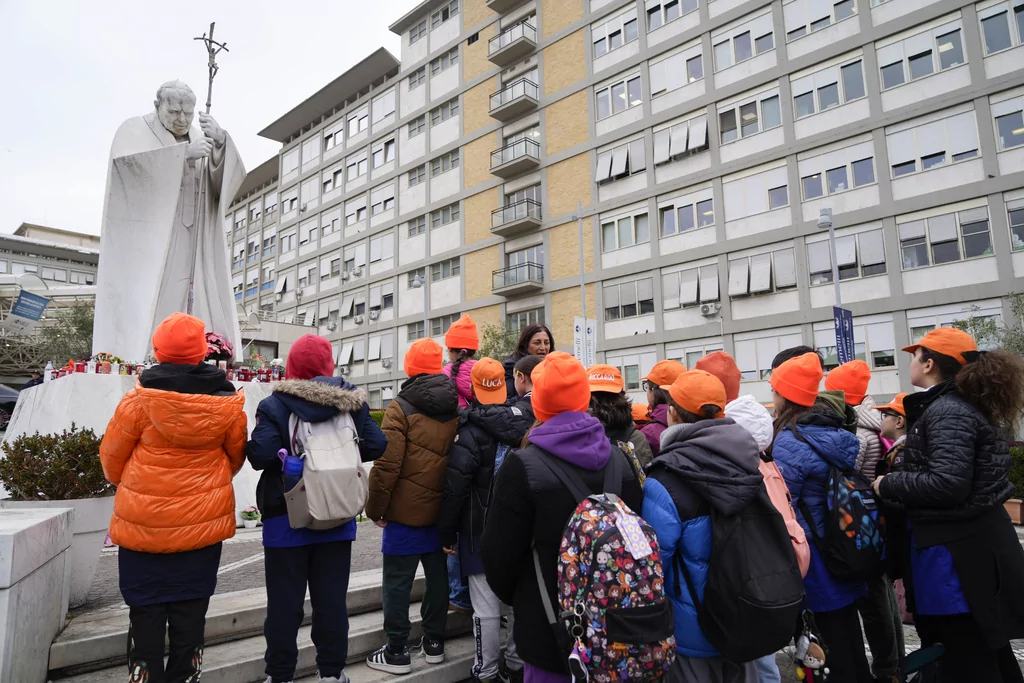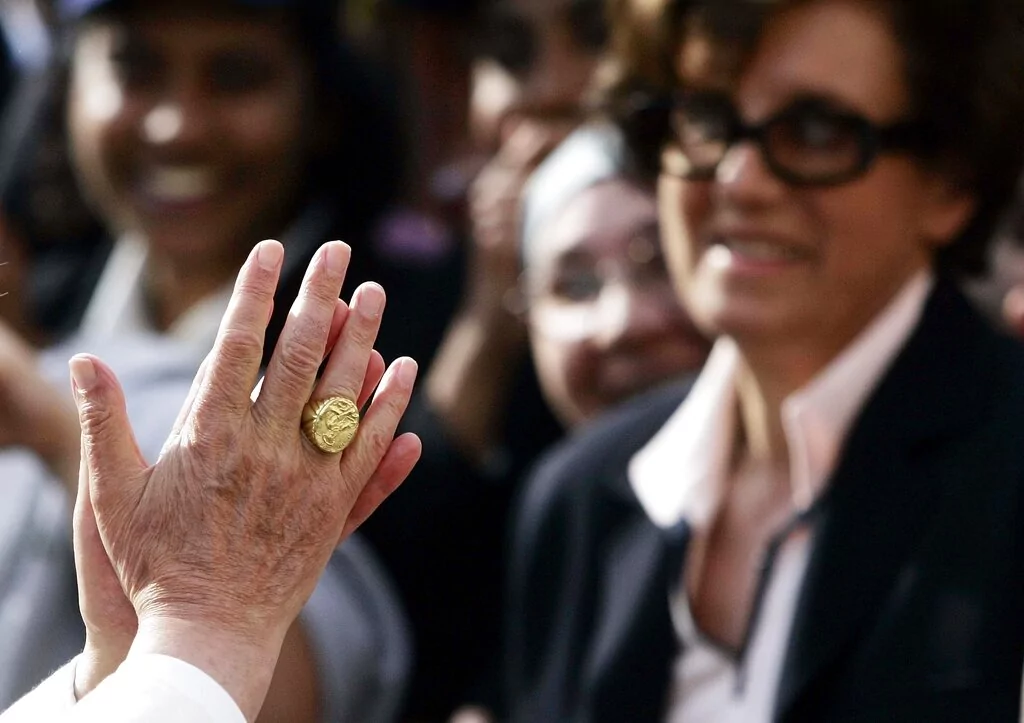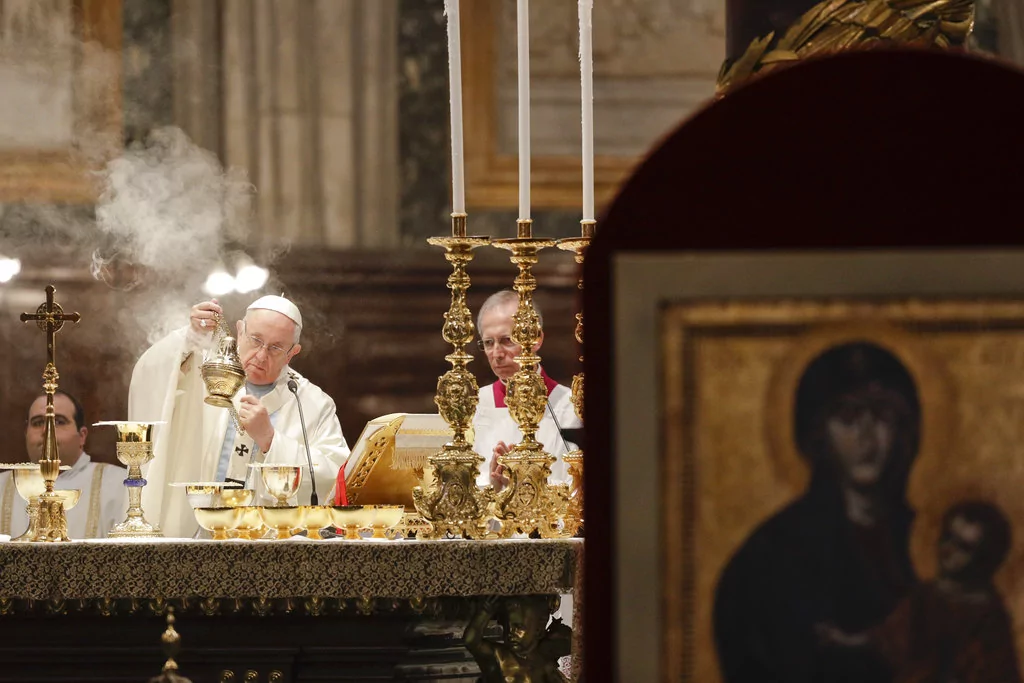Pope Francis was released from Rome’s Gemelli Hospital on March 23, after receiving care there for 38 days. He returned to the Vatican, where he attended public events, including the Palm Sunday celebration in Saint Peter’s Square. Before he died, he met with Vice President JD Vance and greeted crowds of people celebrating Easter.
POPE FRANCIS, LEADER OF THE CATHOLIC CHURCH, DEAD AT 88
“Dearest brothers and sisters, with deep sorrow I must announce the death of our Holy Father Francis,” The Camerlengo of the Apostolic Chamber, Cardinal Kevin Farrell said in the statement. “At 7:35 this morning, the Bishop of Rome, Francis, returned to the house of the Father. His entire life was dedicated to the service of the Lord and of His Church.”
“He taught us to live the values of the Gospel with fidelity, courage, and universal love, especially in favor of the poorest and most marginalized,” Farrell added. “With immense gratitude for his example as a true disciple of the Lord Jesus, we commend the soul of Pope Francis to the infinite merciful love of the One and Triune God.”

Since the pope’s health struggled began, Vatican City has been working to ensure they’re prepared for an end to his pontificate.
Centuries-old protocol
The Catholic Church is almost 2,000 years old, and over the centuries, the protocol for papal funerals has been codified and refined into a seamless procedure.
After Farrell confirmed his death with the aid of medical professionals, the camerlengo is then expected to take possession of the pontiff’s bespoke Ring of the Fisherman and crush it with a silver hammer.
The ring, depicting St. Peter casting a net into the ocean, symbolizes papal authority and legitimacy. In past centuries, it was used to seal official correspondence with wax. Other cardinals would witness its destruction to ensure the ceremony was carried out.
A Mass of Repose will then be celebrated inside St. Peter’s Basilica in Vatican City, with a homily honoring the life of the deceased pope.
The period between a pope’s death and the election of his successor is referred to as sede vacante, Latin for “the chair [of St. Peter] being vacant.”
Clergy, religious people, and laity from around the world would visit Rome during this time to view the body as it lays in state and pay their final respects.
During sede vacante, the governance of the entire Catholic Church is invested in the College of Cardinals. However, the use of these powers is strictly limited.

The Catholic Church will honor Pope Francis with nine days of mourning, and a memorial mass is celebrated on each day.
The pope will then be buried in a Rite of Interment — usually a rather private ceremony in which high-ranking church officials observe the final placement of the pontiff in his grave or tomb.
Pope Francis’s personal tweaks
Pope Francis issued small reforms in 2024 to make his funeral more focused on humility, austerity, and his own personal devotion.
Archbishop Diego Ravelli, Master of Apostolic Ceremonies, said last year that “a second edition” of the Order of Funerals for Roman Pontiffs “became necessary” — “First of all, because Pope Francis has requested it, as he himself has stated on several occasions of the need to simplify and adapt certain rites so that the celebration of the funeral of the Bishop of Rome may better express the faith of the Church in the Risen Christ.”
Pope Francis’s tweaks are mostly focused on simplifying the ceremonies and eliminating unnecessary ornamentation. For example, he requested that the Vatican use just one coffin for the body of a deceased pontiff instead of the traditional three, each made of a different material.
Additionally, instead of presenting the body for public viewing on an ornate catafalque, the body will be made visible inside its open coffin.
Other changes include the invocation of all canonized popes during the Litany of the Saints and updated translations of the liturgy.
Ravelli said these changes were made “to emphasize even more that the funeral of the Roman pontiff is that of a pastor and disciple of Christ and not of a powerful person of this world.”
Pope Francis’s choice of final resting place
Pope Francis requested to break with recent tradition and be buried outside St. Peter’s Basilica, where 91 popes are interned.
Instead, he expressed his desire to be buried inside the Papal Basilica of St. Mary Major in Rome.
Six other popes are buried in the basilica — Pope Honorius III, Pope Clement VIII, Pope Clement IX, Pope Sixtus V, and St. Pius V — but a pontiff hasn’t been buried in the church since the 17th century.
Pope Francis has a special affinity for the basilica and its depiction of the Virgin Mary and baby Jesus, Salus Populi Romani (Salvation of the People of Rome).
“It’s my great devotion,” Pope Francis told Mexican television outlet N+. “The place is already prepared.”

Pope Francis visited the basilica — one of the four most prominent churches in the city and home to a relic of the Holy Cradle — over 100 times since becoming the Bishop of Rome, beginning after he was first elected.
CLICK HERE TO READ MORE FROM THE WASHINGTON EXAMINER
The College of Cardinals will then convene for a conclave (Latin for “[locked] with a key”) in Rome to elect his successor.
The cardinals stay locked inside the Sistine Chapel and its joint residential areas for as long as it takes to reach a two-thirds majority vote for a successor.
Any Catholic male can technically be elected to the papacy, regardless of whether he’s a cardinal, a bishop, a priest, or even just a layman. This has not happened since Pope Urban VI was elected in 1378.














